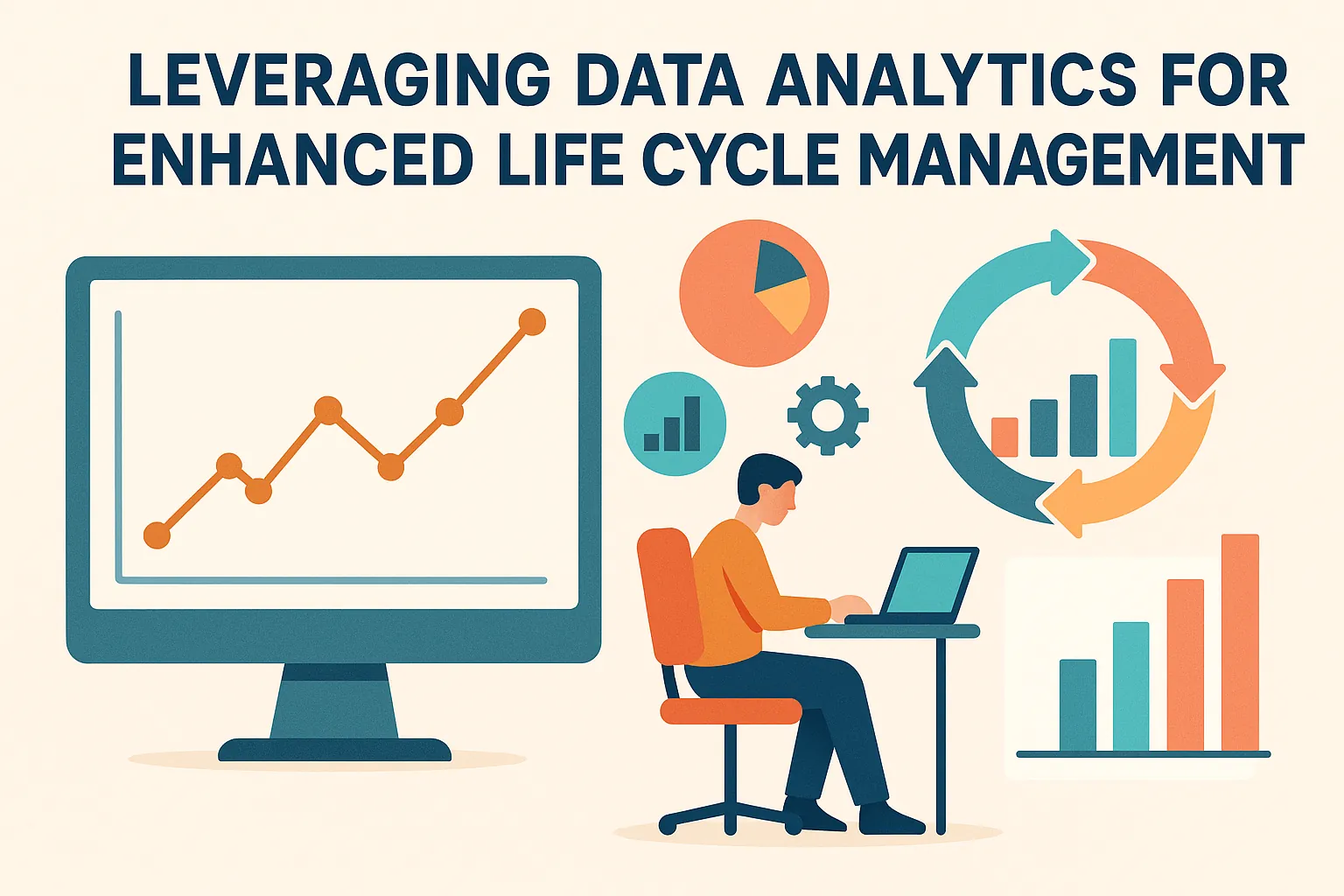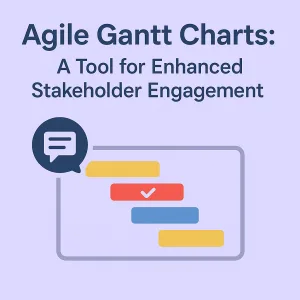Introduction to Life Cycle Management
The life cycle management process is a critical framework that guides projects from inception to completion. This structured approach not only ensures that projects are executed efficiently but also enhances the likelihood of achieving desired outcomes.
Definition of Life Cycle Management Process in Project Management
Life cycle management in project management refers to the systematic process of overseeing a project through its various stages, from initiation and planning to execution, monitoring, and closure. This process encompasses a series of phases that provide a roadmap for project managers and teams, ensuring that all aspects of the project are addressed and managed effectively. By adhering to this structured approach, project managers can maintain control over project scope, resources, timelines, and quality, ultimately leading to successful project delivery.
Importance of Life Cycle Management for Project Success
The significance of life cycle management cannot be overstated. It plays a pivotal role in ensuring project success for several reasons:
- Structured Approach: By following a defined life cycle, project teams can systematically address each phase, reducing the risk of oversight and enhancing overall project organization.
- Resource Optimization: Effective life cycle management allows for better allocation and utilization of resources, ensuring that time, budget, and personnel are managed efficiently throughout the project.
- Risk Mitigation: By identifying potential risks at each phase, project managers can implement strategies to mitigate these risks, thereby increasing the chances of project success.
- Stakeholder Engagement: A clear life cycle process facilitates better communication and engagement with stakeholders, ensuring that their needs and expectations are met throughout the project.
Overview of Different Phases in the Life Cycle Management Process
The life cycle management process typically consists of several key phases, each with its own objectives and deliverables:
- Initiation: This phase involves defining the project’s purpose, scope, and objectives. It includes feasibility studies and stakeholder identification to ensure alignment with organizational goals.
- Planning: During this phase, detailed project plans are developed, including timelines, resource allocation, and risk management strategies. This is where data analytics can play a crucial role in informing decisions and optimizing project plans.
- Execution: In this phase, the project plan is put into action. Teams work on deliverables, and project managers monitor progress to ensure alignment with the plan. Data analytics can provide real-time insights into performance metrics, enabling timely adjustments.
- Monitoring and Controlling: This phase runs concurrently with execution and involves tracking project performance against the plan. Key performance indicators (KPIs) are analyzed to identify variances and implement corrective actions as needed.
- Closure: The final phase involves completing all project activities, obtaining stakeholder acceptance, and conducting post-project evaluations. Lessons learned are documented to inform future projects.
By understanding and effectively managing each of these phases, project managers can leverage data analytics to enhance decision-making, optimize processes, and ultimately drive project success. This comprehensive approach to life cycle management not only improves project outcomes but also fosters a culture of continuous improvement within organizations.
Understanding Data Analytics in Project Management
The integration of data analytics has become increasingly vital for enhancing the life cycle management process. By leveraging data analytics, project managers can make informed decisions that significantly impact project outcomes. Below, we explore the definition of data analytics, its relevance to project management, the various types of data analytics, and how these analytics can influence decision-making throughout the project life cycle.
Definition of Data Analytics and Its Relevance to Project Management
Data analytics refers to the systematic computational analysis of data, aimed at uncovering patterns, correlations, and insights that can inform decision-making. In project management, data analytics plays a crucial role by providing project managers with the tools to analyze historical data, monitor project performance, and predict future trends. This capability allows for more strategic planning and execution, ultimately leading to improved project efficiency and effectiveness.
- Relevance: Data analytics helps project managers identify potential risks, allocate resources more effectively, and enhance stakeholder communication. By utilizing data-driven insights, project managers can optimize project performance and ensure alignment with organizational goals.
Types of Data Analytics
Data analytics can be categorized into three main types, each serving a distinct purpose within project management:
- Descriptive Analytics: This type focuses on summarizing historical data to understand what has happened in a project. It involves the use of metrics and key performance indicators (KPIs) to provide insights into past project performance. For example, descriptive analytics can reveal trends in project timelines, budget adherence, and resource utilization.
- Predictive Analytics: Predictive analytics uses statistical models and machine learning techniques to forecast future outcomes based on historical data. In project management, this can help anticipate potential risks and challenges, allowing project managers to proactively address issues before they escalate. For instance, predictive analytics can estimate the likelihood of project delays based on past performance data.
- Prescriptive Analytics: This advanced form of analytics goes a step further by recommending actions based on data analysis. Prescriptive analytics can guide project managers in making optimal decisions regarding resource allocation, scheduling, and risk management. By simulating various scenarios, project managers can evaluate the potential impact of different strategies and choose the best course of action.
How Data Analytics Can Influence Decision-Making in Project Management
The influence of data analytics on decision-making in project management is profound. Here are several ways in which data analytics enhances decision-making throughout the project life cycle:
- Informed Decision-Making: By providing real-time insights and historical data analysis, data analytics enables project managers to make informed decisions that are backed by evidence rather than intuition. This leads to more accurate forecasting and better resource management.
- Risk Management: Data analytics allows project managers to identify and assess risks early in the project life cycle. By analyzing data trends, project managers can develop risk mitigation strategies that minimize the impact of potential issues.
- Performance Monitoring: Continuous monitoring of project performance through data analytics helps project managers track progress against established KPIs. This ongoing assessment allows for timely adjustments to project plans, ensuring that projects remain on track.
- Stakeholder Engagement: Data analytics can enhance communication with stakeholders by providing clear and concise reports that highlight project performance and outcomes. This transparency fosters trust and collaboration among team members and stakeholders.
Phases of Life Cycle Management and Data Analytics Applications
The life cycle management process is crucial for ensuring that projects are executed efficiently and effectively. By integrating data analytics into each phase of this process, project managers and data analysts can make informed decisions that enhance project outcomes. Below, we explore how data analytics can be applied at each phase of the life cycle management process.
1. Initiation
- Using data to assess project feasibility and stakeholder interest: At the initiation phase, data analytics can help evaluate whether a project is viable by analyzing market trends, stakeholder feedback, and historical project data. This assessment ensures that resources are allocated to projects with the highest potential for success.
- Identifying project risks through historical data analysis: By examining past projects, teams can identify common risks and challenges. This proactive approach allows project managers to develop strategies to mitigate these risks before they impact the current project.
2. Planning
- Utilizing data analytics for resource allocation and budgeting: During the planning phase, data analytics can optimize resource allocation by analyzing past resource usage and project costs. This ensures that budgets are realistic and resources are allocated efficiently.
- Leveraging predictive analytics for timeline estimations: Predictive analytics can forecast project timelines based on historical data, helping project managers set achievable deadlines and allocate time effectively across various tasks.
3. Execution
- Monitoring project performance through real-time data analytics: In the execution phase, real-time data analytics allows project managers to track progress against the project plan. This immediate feedback helps identify any deviations from the plan and facilitates timely interventions.
- Data-driven decision-making for course corrections: When issues arise, data analytics provides insights that inform decision-making. By analyzing performance data, project managers can make informed adjustments to keep the project on track.
4. Monitoring and Controlling
- Using analytics to track KPIs and project milestones: Throughout the monitoring and controlling phase, data analytics is essential for tracking key performance indicators (KPIs) and milestones. This ongoing analysis helps ensure that the project remains aligned with its goals.
- Adapting strategies based on data insights: As data is collected, project managers can adapt their strategies based on insights gained from analytics. This flexibility allows teams to respond to challenges and opportunities as they arise.
5. Closure
- Analyzing project data for lessons learned and future improvements: At the closure phase, data analytics plays a vital role in evaluating project performance. By analyzing data from the project, teams can identify lessons learned that can inform future projects.
- Data-driven evaluation of project outcomes vs. goals: Finally, a thorough analysis of project outcomes against initial goals provides valuable insights into what worked and what didn’t. This evaluation is crucial for continuous improvement in project management practices.
Benefits of Integrating Data Analytics into Life Cycle Management
The life cycle management process is crucial for ensuring that projects are executed efficiently and effectively. By leveraging data analytics at each phase of this process, organizations can significantly enhance their decision-making capabilities and overall project outcomes. Here are some key benefits of integrating data analytics into life cycle management:
- Improved Decision-Making Based on Data-Driven Insights: Data analytics provides project managers with the ability to analyze historical data and current project metrics, leading to more informed decisions. By utilizing predictive analytics, teams can forecast potential outcomes and make proactive adjustments, ensuring that projects stay aligned with their objectives. This data-driven approach minimizes reliance on intuition and enhances the accuracy of decisions made throughout the project life cycle.
- Enhanced Risk Management and Mitigation Strategies: One of the most significant advantages of data analytics is its ability to identify and assess risks early in the project life cycle. By analyzing data patterns and trends, project managers can pinpoint potential risks and develop effective mitigation strategies. This proactive stance not only reduces the likelihood of project delays and cost overruns but also fosters a culture of risk awareness within the team, leading to more resilient project execution.
- Increased Efficiency and Resource Optimization: Data analytics enables project teams to track resource utilization and project timelines in real-time. By analyzing this data, project managers can identify inefficiencies and areas for improvement, allowing for better allocation of resources. This optimization not only streamlines processes but also reduces waste, ultimately leading to cost savings and improved project delivery times.
- Better Stakeholder Communication Through Informed Reporting: Effective communication with stakeholders is vital for project success. Data analytics facilitates the creation of comprehensive reports that provide stakeholders with clear insights into project progress, risks, and resource allocation. By presenting data in a visually appealing and easily digestible format, project managers can foster transparency and build trust with stakeholders, ensuring that everyone is aligned and informed throughout the project life cycle.
Challenges and Considerations
Integrating data analytics into the life cycle management process in project management presents numerous opportunities for informed decision-making. However, it also introduces several challenges that must be addressed to maximize the benefits of data-driven insights. Here are some key considerations:
- Data Quality and Integrity Issues: One of the foremost challenges in utilizing data analytics is ensuring the quality and integrity of the data being analyzed. Poor data quality can lead to inaccurate insights, which may adversely affect project outcomes. Data may be incomplete, outdated, or inconsistent, making it crucial for project managers to implement robust data governance practices. Regular audits and validation processes are essential to maintain high data standards throughout the project life cycle.
- Need for Skilled Personnel: The effectiveness of data analytics heavily relies on the expertise of personnel involved in data analysis. Project managers and data analysts must possess the necessary skills to interpret complex data sets and derive actionable insights. This often requires ongoing training and development to keep pace with evolving analytical tools and methodologies. Organizations may face challenges in recruiting and retaining skilled data professionals, which can hinder the successful integration of analytics into life cycle management.
- Balancing Data-Driven Decisions with Human Intuition: While data analytics provides valuable insights, it is essential to balance these insights with human intuition and experience. Project managers often rely on their judgment and expertise to make decisions, especially in ambiguous situations where data may not provide clear guidance. Striking the right balance between data-driven decision-making and leveraging human insights is critical. This requires fostering a culture that values both analytical rigor and experiential knowledge, ensuring that decisions are well-rounded and contextually informed.
Tools and Technologies for Data Analytics in Life Cycle Management
Effective life cycle management is crucial for ensuring that projects are completed on time, within budget, and to the desired quality standards. Leveraging data analytics throughout the project life cycle can significantly enhance decision-making processes. Below is an overview of popular data analytics tools, their integration with project management software, and the role of emerging technologies like AI and machine learning.
Overview of Popular Data Analytics Tools
Tableau:
- Description: Tableau is a powerful data visualization tool that allows users to create interactive and shareable dashboards. It helps project managers visualize data trends and patterns, making it easier to communicate insights to stakeholders.
- Use Case: In life cycle management, Tableau can be used to track project performance metrics, resource allocation, and budget adherence.
Power BI:
- Description: Microsoft Power BI is a business analytics service that provides interactive visualizations and business intelligence capabilities. It integrates seamlessly with other Microsoft products, making it a popular choice for organizations already using Microsoft tools.
- Use Case: Project managers can utilize Power BI to analyze project data in real-time, enabling quick adjustments to project plans based on current performance.
R:
- Description: R is a programming language and software environment for statistical computing and graphics. It is widely used among data analysts for data manipulation, statistical analysis, and visualization.
- Use Case: R can be employed in life cycle management to perform complex statistical analyses, helping project managers understand risks and forecast project outcomes.
Python:
- Description: Python is a versatile programming language that is increasingly popular in data analytics due to its simplicity and the vast array of libraries available for data manipulation and analysis (e.g., Pandas, NumPy, Matplotlib).
- Use Case: In project management, Python can automate data collection and analysis processes, allowing for more efficient tracking of project metrics.
Integration of Project Management Software with Data Analytics Platforms
Integrating project management software with data analytics platforms is essential for maximizing the benefits of data-driven decision-making. Many project management tools, such as Asana, Trello, and Jira, offer APIs that allow for seamless integration with analytics tools. This integration enables project managers to:
- Centralize Data: Consolidate data from various sources into a single platform for comprehensive analysis.
- Automate Reporting: Generate real-time reports and dashboards that reflect the current status of projects, facilitating timely decision-making.
- Enhance Collaboration: Share insights and analytics with team members and stakeholders, fostering a collaborative environment focused on data-driven outcomes.
Emerging Technologies: AI and Machine Learning
The advent of artificial intelligence (AI) and machine learning (ML) is transforming the landscape of data analytics in project management. These technologies can enhance analytics in several ways:
- Predictive Analytics: AI and ML algorithms can analyze historical project data to predict future outcomes, helping project managers identify potential risks and opportunities early in the project life cycle.
- Automated Insights: Machine learning models can automatically generate insights from data, reducing the time analysts spend on manual data interpretation and allowing them to focus on strategic decision-making.
- Resource Optimization: AI can assist in optimizing resource allocation by analyzing patterns in resource usage and suggesting adjustments to improve efficiency.
Conclusion
The life cycle management process is pivotal for ensuring that projects are executed efficiently and effectively. Throughout each phase of this process, data analytics plays a crucial role in informing decisions and enhancing overall project outcomes. Here are the key insights regarding the integration of data analytics into life cycle management:
- Role of Data Analytics: Data analytics serves as a guiding force throughout the life cycle management process. From the initial planning stages to execution, monitoring, and closure, data-driven insights help project managers identify trends, assess risks, and make informed decisions. By leveraging historical data and predictive analytics, teams can anticipate challenges and optimize resource allocation, ultimately leading to more successful project completions.
- Embracing Data Analytics: The importance of embracing data analytics cannot be overstated. As project environments become increasingly complex, the ability to analyze and interpret data effectively can distinguish successful projects from those that falter. By utilizing data analytics, project managers can enhance their decision-making capabilities, leading to improved project outcomes, increased stakeholder satisfaction, and a stronger alignment with organizational goals.
In conclusion, the integration of data analytics into life cycle management is not just a trend; it is a necessity for modern project management. By leveraging data effectively, project managers can navigate complexities, enhance decision-making, and ultimately drive project success. Embracing this approach will not only benefit individual projects but also contribute to the overall advancement of project management practices within organizations.
Find out more about Shaun Stoltz https://www.shaunstoltz.com/about/.
This post was written by an AI and reviewed/edited by a human.



